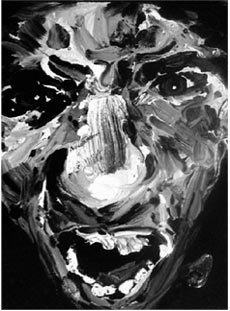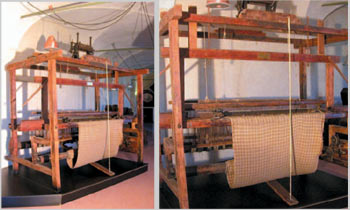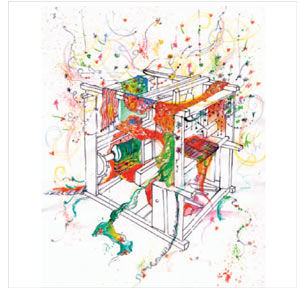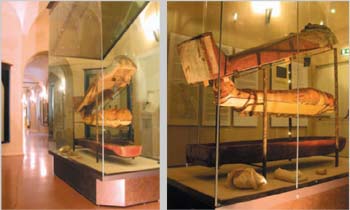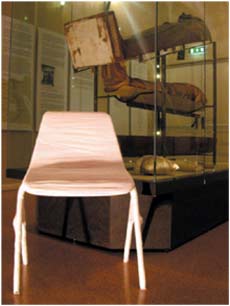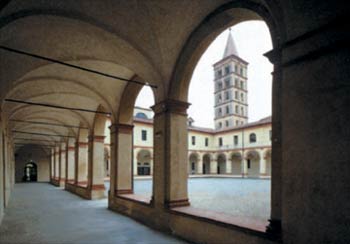
MUSEO
DEL TERRITORIO BIELLESE
CHIOSTRO DI SAN SEBASTIANO
Via Quintino Sella
tel. 015/2529345
![]() critical text by di Olga Gambari
critical text by di Olga Gambari
The Museo del Territorio in Biella summarizes several possibilities of reading and different topics, stratified in space and time just as the history they are linked to. An ancient cloister houses the museum that tells the tale of a land through a collection of objects, artefacts and paintings.
The four young artists from Biella, who have been asked to create a contemporary dialogue with the historical works, have thought of an installation that weaves together the whole collection, from the Egyptian finds to those belonging to the material culture and the picture gallery. An art exhibition that shows how the present is rooted into the past and how it merges into it, thus acquiring its own meaning.
The journey ideally starts from the Mummifica-azione (Mummific-action) by Gigi Piana and Laura Testa, who develop the concepts of memory and preservation implied in the Egyptian mummy, wrapping up other objects of common use. A column, a chair and a fire extinguisher are mummified in cotton gauze in order to hand over to the future the soul of the present time, dying out precociously because of consumerism. But that is also a longing for eternity, able to turn our everyday life into history.
Irene Rossi, then, moulds a miniature world made of cloth, trimmings, beads and coloured threads on a big 19 th century loom to illustrate La favolosa storia d'amore di Madame Trama e Monsieur Ordito (The wonderful love affair between Madame Weave and Monsieur Warp). Finally, Roberto Coda Zabetta draws out one of the two protagonists of a seventeenth century painting by a unknown Lombard artist. St Francis crying out in pain while he receives the stigmata, a classical face transformed in an unrecognisable alter ego, going through four hundred years of history, pressed in a time machine that turns the saint into an everyday contemporary man.

